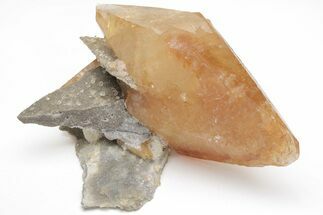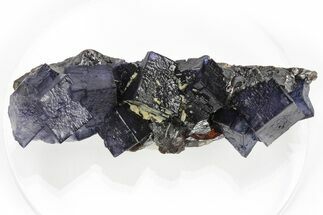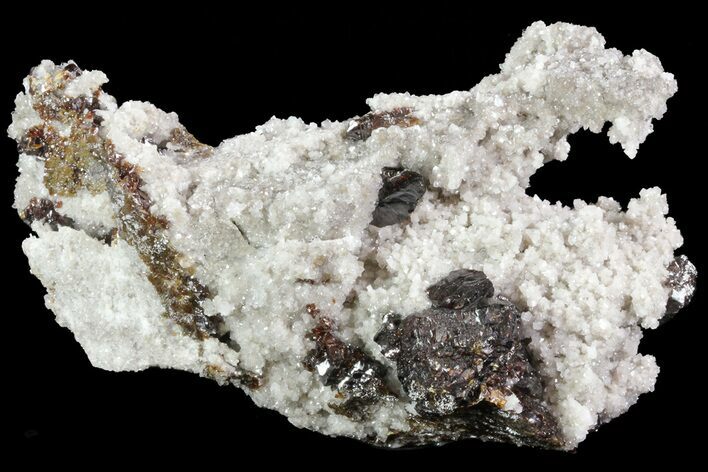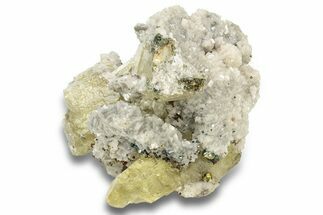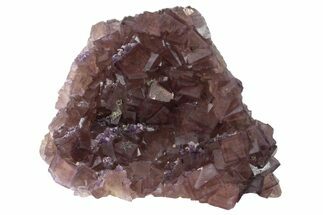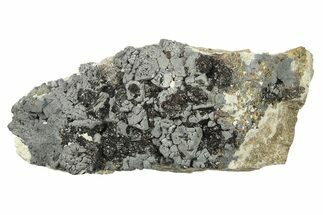This Specimen has been sold.
5.4" Sphalerite Cluster on Sparkling Dolomite - Elmwood Mine
This is a 5.4" wide association of sphalerite crystals on a sparkling dolomite crystal encrusted matrix, collected from the famous Elmwood mine in Tennessee.
The Elmwood Mine is a zinc mine in Carthage, Tennessee that opened in 1969. It then closed for many years, only to be reopened in 2010. It has produced many world class specimens of fluorite, calcite, barite, and galena over the years. Specimens used to be plentiful as miners were allowed to recover specimens, but collecting is strictly prohibited by the new mine owners. They've gone to great lengths to prevent the mining of specimens, including blasting crystal pockets or filling them with slurry.
Sphalerite is a part of the sulfide group and typically exhibits a grey/black appearance due to high concentrations of impurities. In its purest state, sphalerite's chemical composition is ZnS, and can display a gemmy transparent light tan/yellow color. This is one of the few minerals that can form crystals ranging anywhere between gemmy and transparent to opaque and metallic-like. Opaque or cloudy sphalerite tends to be most abundant since iron easily replaces zinc in the process of formation.
Dolomite is an anhydrous carbonate mineral composed of calcium magnesium carbonate (CaMg(CO3)2).
The mineral dolomite crystallizes in the trigonal-rhombohedral system. It forms white, tan, gray, or pink crystals. Dolomite is a double carbonate, having an alternating structural arrangement of calcium and magnesium ions. It does not rapidly dissolve in dilute hydrochloric acid as calcite does. Crystal twinning is common.
Dolomite was first described by Carl Linnaeus in 1768, and in 1791 it was described as a rock by the French naturalist and geologist Déodat Gratet de Dolomieu. He first recognized the material in buildings of the old city of Rome, and later as samples collected in the mountains known as the Dolomite Alps of northern Italy.
The mineral dolomite crystallizes in the trigonal-rhombohedral system. It forms white, tan, gray, or pink crystals. Dolomite is a double carbonate, having an alternating structural arrangement of calcium and magnesium ions. It does not rapidly dissolve in dilute hydrochloric acid as calcite does. Crystal twinning is common.
Dolomite was first described by Carl Linnaeus in 1768, and in 1791 it was described as a rock by the French naturalist and geologist Déodat Gratet de Dolomieu. He first recognized the material in buildings of the old city of Rome, and later as samples collected in the mountains known as the Dolomite Alps of northern Italy.
SPECIES
Sphalerite and Dolomite
LOCATION
Elmwood Mine, Carthage, Tennessee
SIZE
5.4" wide, 3.6" tall
CATEGORY
ITEM
#71927
 Reviews
Reviews

